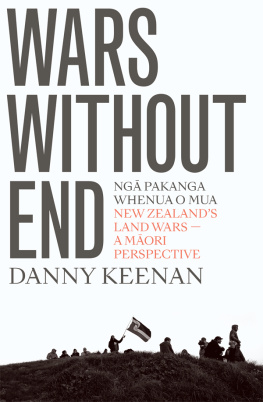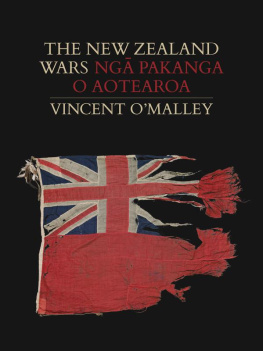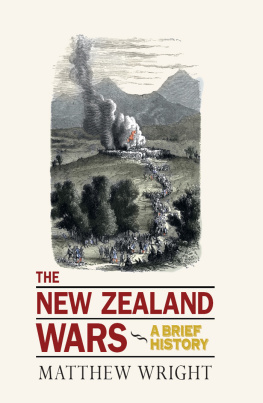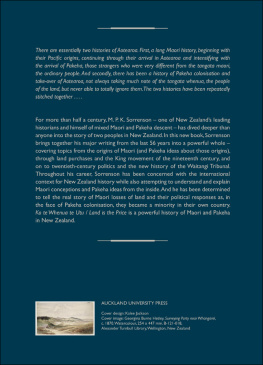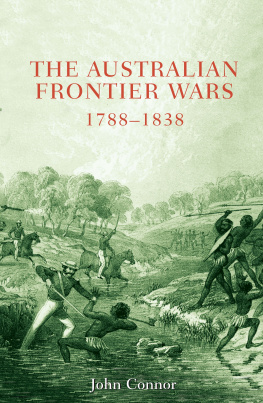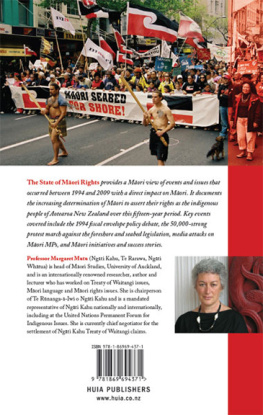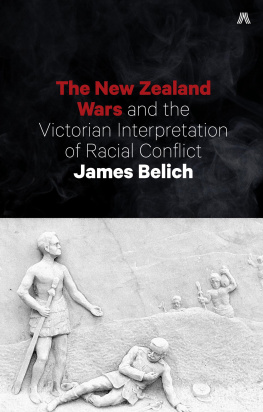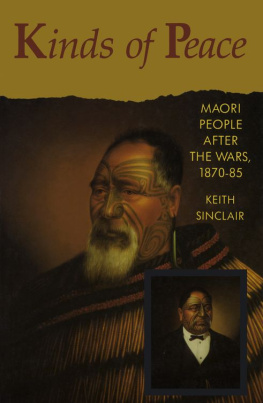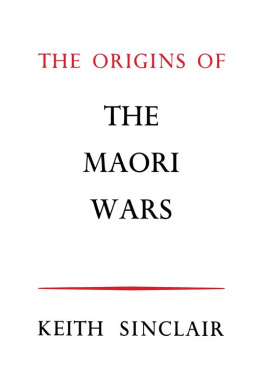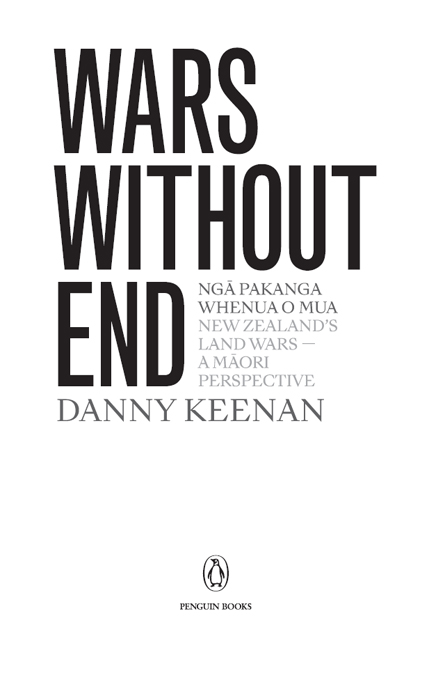ACKNOWLEDGEMENTS
During the 1990s and 2000s, when the first drafts of this book were written, the New Zealand Wars seemed but a distant part of a tangled nineteenth century, when Mori and the Crown and colonial Pkeh had disputed, contested and fought each other across many fronts.
Teaching a course on the wars at Massey University in those days was seen as novel, with a limited though significant literature yet to generate a particular historiography. Our field trips to the battle sites around Hwera and Waitara often attracted media attention. TV3 once thought about sending along a film crew, capturing the stories of our Mori hosts and interviewing the students.
At the time, the field of nineteenth-century CrownMori history was undoubtedly dominated by the Waitangi Tribunal. We were all influenced by the Tribunals extensive deliberations and profound findings which, under the somewhat radical leadership of noted Mori jurist Eddie Durie, emphasised Mori perspectives and counternarratives, attracting pointed academic criticism. So much so, that a noted historian was once overheard to remark that Waitangi Tribunal researchers and historians seemed to be taking over the conferences of the New Zealand Historical Association.
Nowadays, in the post-Treaty claims environment, with far-reaching settlements now agreed to, the wars have re-emerged as a latter frame of historical reference generating considerable academic, community, political and media interest, largely driven by Pkeh historians. But the truism still holds, much emphasised by the Tribunal, that Mori are not well served by histories which focus on discreet aspects of the past, especially where little or no account is taken of wide-ranging contexts or, particularly for Mori, outcomes.
Studies have now emerged, for instance, which emphasise military aspects which went badly for Mori, depriving them, we are told, of their sovereignty and much more, reminding Mori of those things egregiously lost or, perhaps after 1840, never really possessed. Now, at a time of Mori resurgence, with customary tenets to the fore and with historical grievances settled, such reminders do have the effect, perhaps unintended, of recolonising Mori.
In this situation, I am very grateful to Penguin Random House for providing me with the opportunity to completely revise this book, first published in 2009, by updating its literature, revisiting its context and reassessing its primary arguments. I would like to thank Jeremy Sherlock, Grace Thomas, Steffi Dryden and Rachel Eadie in particular for their assistance. Thanks also to Mike Wagg who edited this book with great skill, to Buddy Mikaere for his support and thoughtful review, and to Joseph Salmon, designer and typographer of Whanganui, for compiling the fine map of the wars.
During my years teaching at Massey, I was privileged to work closely with Dr Hazel Riseborough and Dr Richard Taylor, who was on secondment from the New Zealand Army. I was also very grateful for the support given by Basil Poff, Dr Kirsty Carpenter, Dr Geoff Watson, Professor David Thomson and Professor Margaret Tennant.
Thanks also to Hip and Mona Fenton of Te tiawa who made our field trips possible; their guidance and knowledge was much appreciated, as was the support from time to time from kaumtua like Tom McCullough of Te tiawa, Lou MacDonald of Ngti Mutunga, Reuben Ashford of Te Ati Haunui-a-Paprngi and Te Ru Koriri Wharehoka of Taranaki Tturu, along with my sister Wikitoria Keenan.
Finally, the encouragement of my family was also much appreciated, especially from my daughters Lauren, Philippa, Erin and Ngaire, along with Tane, Amotai, Lily, Bryn, Holly, Jaydn, Naiah, Akash, James, Molly and, not least, Joseph. Thanks also to Raema and Dr Ray Merchant for their continuing interest; and to my wife Gaylene for her endless support.
Danny Keenan
Whanganui
PREFACE
LAND IS THE FOUNDATION OF ALL OUR TROUBLE
Land is the foundation of all our trouble, said Te Rauparaha of Ngti Toa and Ngti Raukawa when asked to account for the circumstances that had led to the killing of twenty-two Pkeh settlers and two Mori at Wairau on 17 June 1843. Over the next twenty years and beyond, Te Rauparahas view would be endorsed by all Mori that land was the source of all their troubles.
CENTRALITY OF LAND
It was once said that all history is argument. It is an argument between different historians, different methods, between past and present, even between what actually happened, and what happens next. Arguments are important, writes John H. Arnold; they create the possibility of changing things.
This book advances a range of arguments about land, conflict and war in nineteenth-century New Zealand. Most historians agree that these themes were closely related; one certainly gets that impression from the primary record. But was land the primary cause of war in New Zealand? Yes, it was, in my view.

